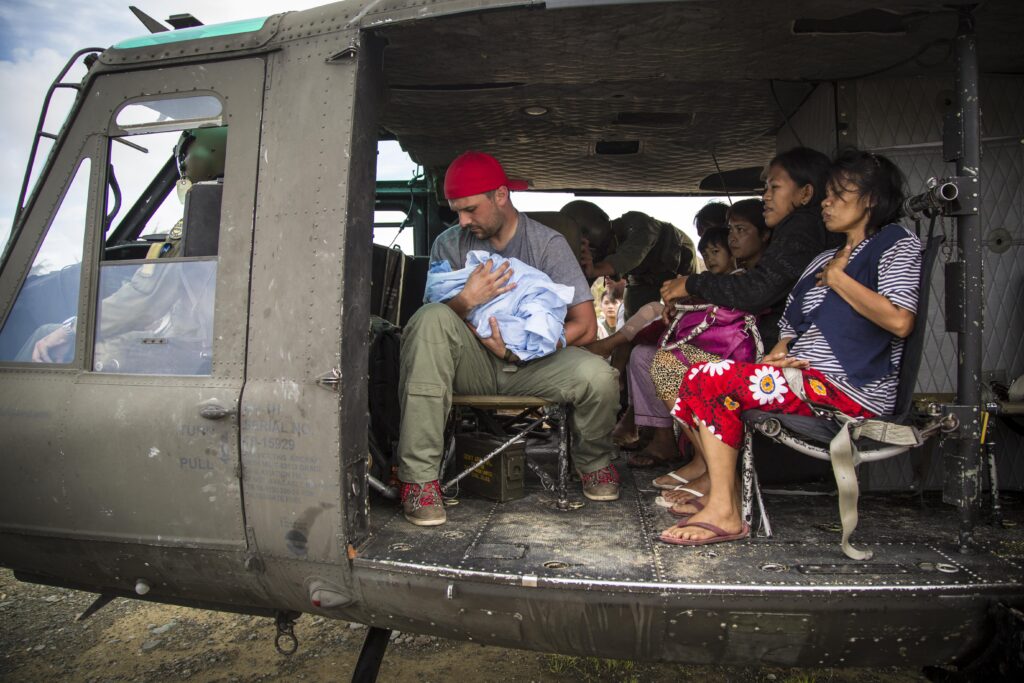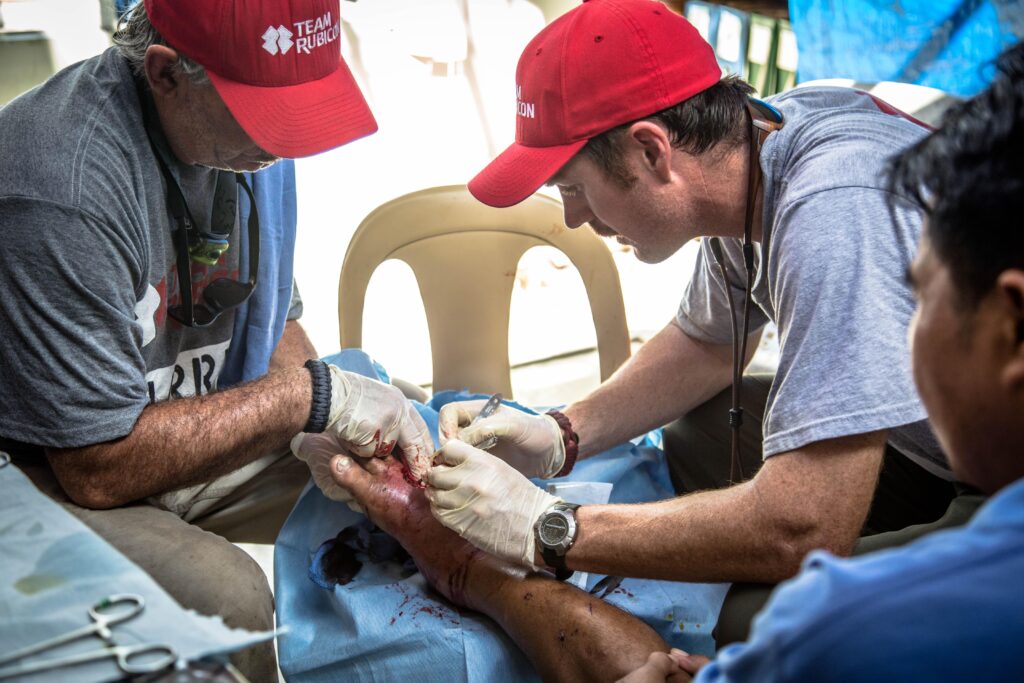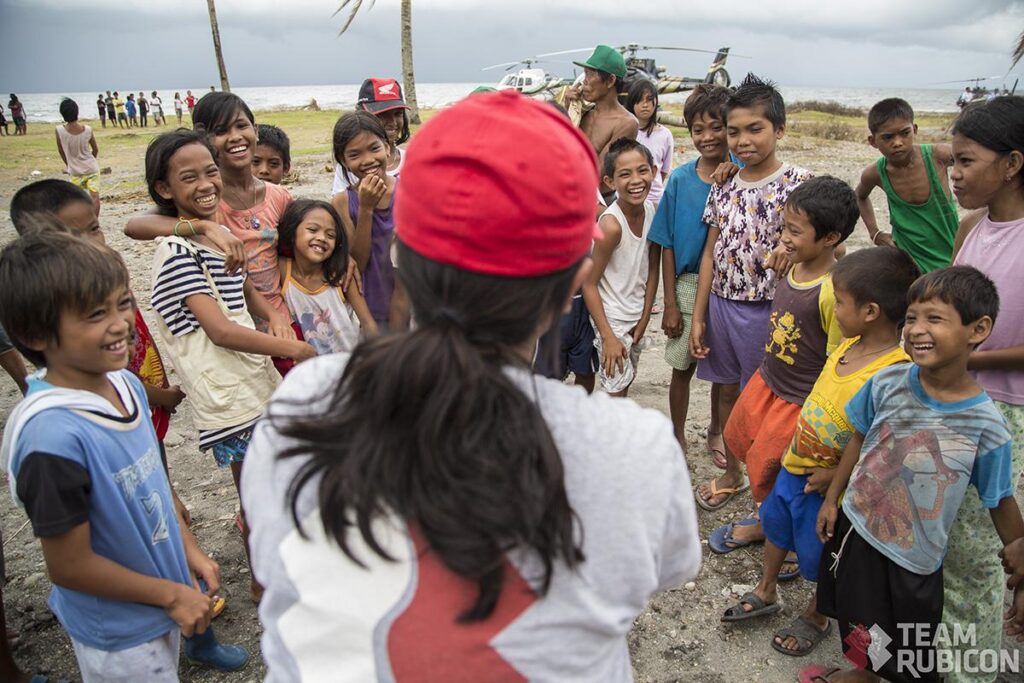Day One in Tanauan
It was Haiti in 2010 that we last saw this level of destruction—a level of destruction that doesn’t just leave entire cities displaced, but also strips away its infrastructure, commerce, industry, schools, agriculture, and every home within miles. Today we were airlifted via Phillipines Air Force helicopters into Tanauan, and the bird’s eye view on the trip in had the potential to numb, to make some throw their hands up in the air and say, “It’s too much”. But when TR got on the ground, seeing these individuals that still manage to wave and smile at us, we are instantly reminded of the power of one, or, in this case, 15.

We integrated with the surgical group Mammoth Medical in a makeshift clinic and operating room in what used to be the Tanauan Town Hall. Severe lacerations, multiple amputations, and nine delivered babies – all under the open rafters still leaking water from last night’s rains into every room. Here, we could do our thing: one small team on the roof to cover the O.R. and recovery rooms with tarps; an assessment team sent out to map access points and landing zones for incoming NGOs to get their bottleneck of supplies into town; TR volunteers helping with triage and wound care; organizing helicopter evacuation for those needing more complex care.

Day Two
Last night we split up and bunked down in two places: the balcony of the town hall, which is now a makeshift hospital, and across the street in the house of a gracious local man whose entire family had left the day before because it was all “too much to bear.” The line of those needing aid at the clinic grew slowly in the AM, enough time for team members to aid in an emergency C-section. That exhausted much of surgical team’s supplies, and the day became an exercise in resourcefulness and creativity as TR and Mammoth Medical utilized what was available to face the sudden surge in new patients. Ambulances seemed to come every hour. We’d hear the sirens and sprint downstairs to aid in unloading the wounded. One thing has become painfully clear: tin roofs do just as much damage after the storm as they do during. Multiple lacerations, mostly from the knees down, in addition to compound fractures, more women in labor, and every other type of wound one may imagine.

It turns out that this, like most other TR missions, is a race with the sun. Nighttime in Tanauan and Tacloban is dramatically different than Moore or even Rockaway Beach. The entire region goes black, leaving the moon and headlamps as the only reliable illumination. In order to get back to our FOB at the Tacloban airfield to regroup and resupply we needed to send gear via truck up the main two-lane highway. Our team leader, JC McGreehan, utilized a satellite phone to check on the status of the helicopter transport while Filipino native (now living in DC) Lourdes Tiglao entertained local children with an impromptu game of pebble hackie sack.

With daylight waning, we made a decision to secure local transport and send the entire team back to the FOB via a local’s livestock truck. The devastation on the road back to Tacloban was gut wrenching as we passed from one village to another on the trip north. We arrived at the airfield to see it dramatically transformed from two days prior. The line of those awaiting a trip on a C-130 to Manila was five people wide with an end we could not see. The airfield was a beehive of activity, pallets being unloaded and stacked, and tents being set up by other relief agencies and military units. As we navigated through the crowd of displaced locals and through the gates of the airfield, we felt the eyes of those military and relief workers on us, as if we had returned from the front lines with the perspective and experiences to match our sweat-drenched shirts and dirt-coated pants and rucks. It was a subtle reminder: Team Rubicon was built for this stuff.



